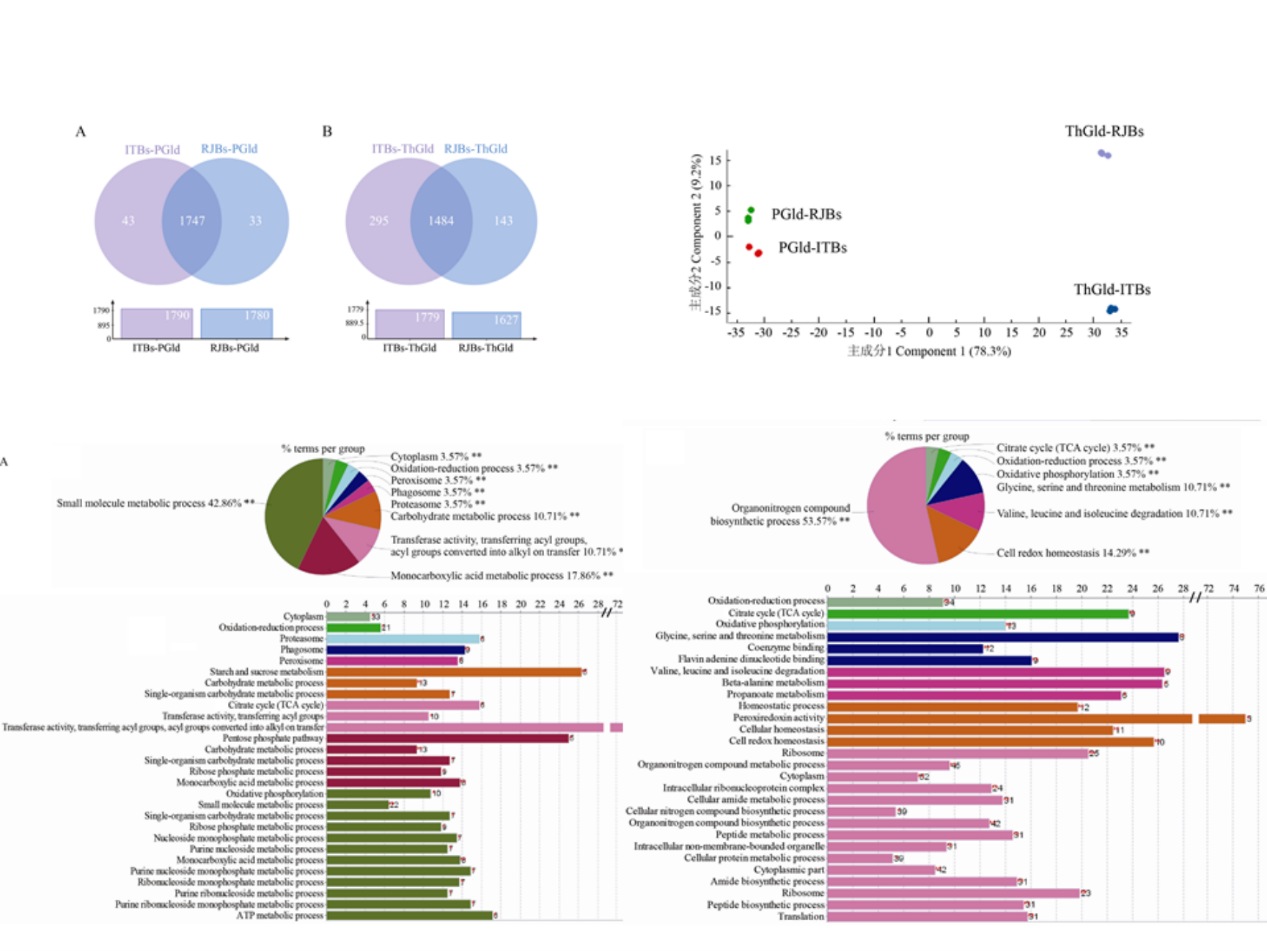A study revealing molecular mechanisms of salivary glands in regulating high royal jelly yield
Date:2022-10-27
The Institute of Apicultural Research of Chinese Academy of Agricultural Sciences (IARCAAS) recently revealed the molecular basis of salivary glands in regulating the high royal jelly yield by comparing proteome differences between Apis mellifera liguatica and Italian honey bees in terms of cephalic salivary gland and thoracic salivary gland of nurse bees, providing a basis for interpreting mechanisms of the high royal jelly yield of Apis mellifera liguatica. Relevant findings were published in the Journal of Integrative Agriculture.

Royal jelly (RJ) is a type of yellowish pulpy substance co-secreted by hypopharyngeal gland, mandibular gland and salivary gland in the head of nurse bees. Salivary glands are divided into the cephalic salivary gland and the thoracic salivary gland. Of both, the cephalic salivary gland is the main storage tank of volatile compounds and pheromones in honey bees, playing an important role in regulating behaviors of honey bees; and the thoracic salivary gland mainly secretes invertases, playing an important role in honey conversion. In addition, the cephalic salivary gland plays a significant role in the formation of royal jelly lipids and the regulation of the glandular secretion function. Nevertheless, a large number of previous studies focused on the hypopharyngeal gland and the mandibular gland, both secretory glands of royal jelly, but few studies were conducted on the effect of the salivary gland in regulating royal jelly secretion and function. This study mainly compared the salivary gland proteome expression profiles and functions of Apis mellifera liguatica and Italian honey bees. The findings showed that salivary glands of Apis mellifera liguatica and Italian honey bees had similar core proteomes to guarantee the synthesis and secretion of royal jelly proteins, pheromones and convertases. After long-term breeding, Apis mellifera liguatica and Italian honey bees had differentiated molecular basis of salivary gland. Compared with the salivary gland of Italian honey bees, that of Apis mellifera liguatica nurse bees was more vigorous in protein synthesis and amino acid metabolism, with a higher cell supply and stress resistance; and secretory proteins were generally upregulated in the salivary gland of Apis mellifera liguatica, which provided a more persistent and efficient protein synthesis system for Apis mellifera liguatica and contributed to the high royal jelly yield.